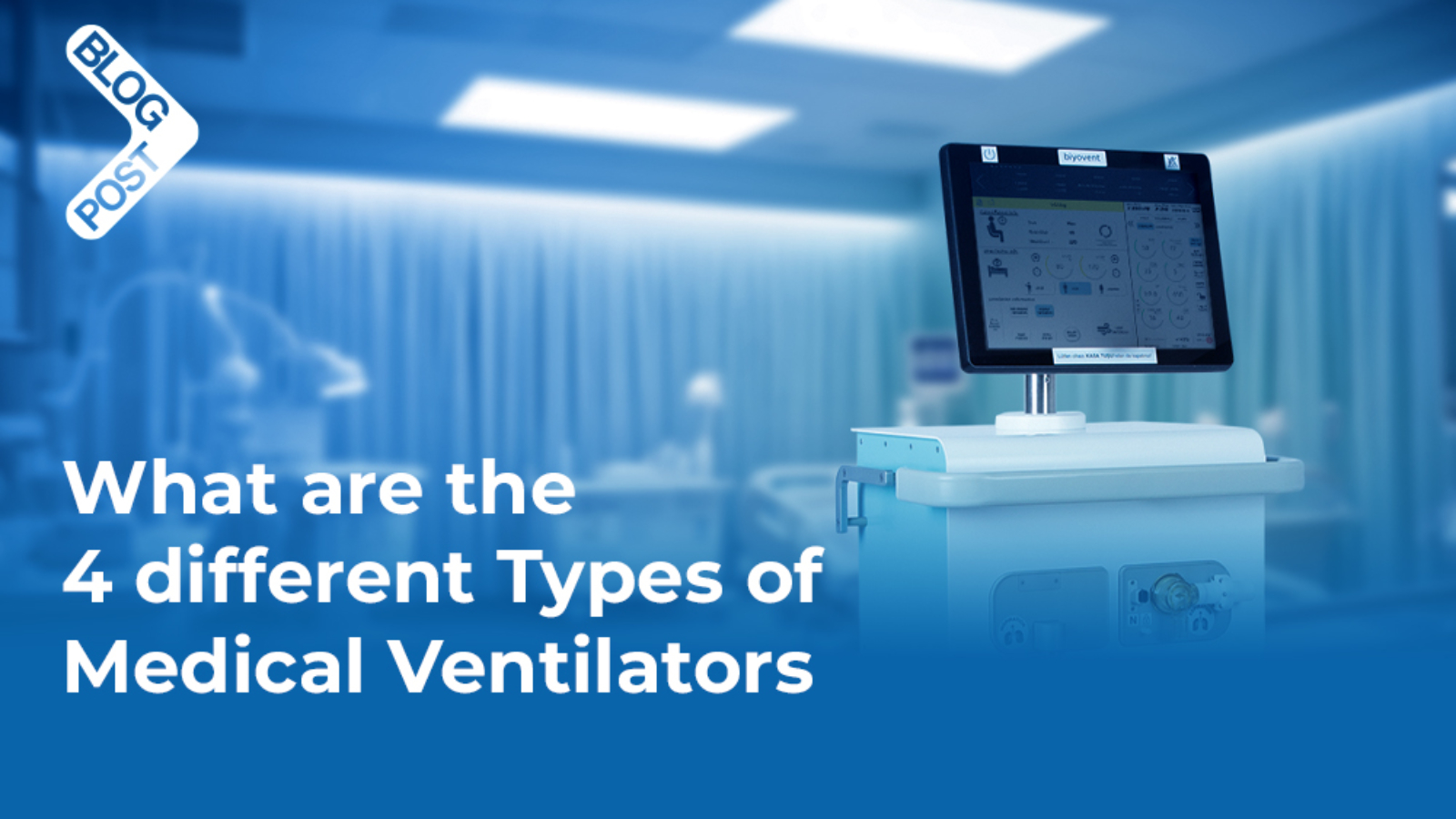Currently, there are different types of ventilators offered to patients by health units in accordance with the patient’s needs. Depending on the particular circumstances, ventilators can be typed according to where the treatment needed by the patient has been applied and how it is applied; these types are as follows: ICU ventilators, Home ventilators, Ambulatory and Emergency ventilators, and Anaesthesia ventilators. This article covers various types of medical ventilators.
ICU Ventilators
Generally named after where they are mainly used, ICU ventilators are typically the most advanced and critical care ventilators. They are used in ICU settings in hospitals and health facilities, for the most serious patients and with the most severe respiratory conditions.
These sophisticated machines offer many modes differing to condition and illness: volume assist/control (v- A/C), pressure assist/control (p- A/C), pressure support ventilation (PSV), synchronized intermittent mandatory ventilation with volume support (vSIMV) and synchronized intermittent mandatory ventilation with pressure support (p-SIMV. (1)
With one variable, only ventilation can be applied. Still, ICU ventilators have dual control (of both volume and pressure). An ICU ventilator uses both variables, volume, and pressure, to present ideal breath to patients.
In addition, to the expected need for wide monitorization and control mechanisms in ICU patients, an ICU ventilator has wide settings menu, interface, and dedicated keys that are more complex than other ventilator types. (1) ICU ventilators present FiO2 sensors and large displays, particularly for breath rate, Peep Inspiratory Pressure, and exhaled tidal volume monitorization. They also have more complex and better secure locks and alarm systems.
Home Ventilators
The name can easily understand as home ventilators or home care ventilators; they are mechanical ventilators designed to serve the patient’s needs at home or in other places like palliative support facilities. (2) These ventilators should be simple because they can be used by people who are not trained as much as a health care practitioner or a clinician. Also, these ventilators should be complex simultaneously because they have some features of highly sophisticated ventilators; for a better-using home, ventilators have a non-complex interface, an easily operatable system, and minimal accessories. They are the most fitted ventilators for a patient’s breathing needs at home with a short trigger time. (3) And they are also tough machines with low costs. Patients with respiratory failure, chronic obstructive pulmonary disease (COPD) (4), amyotrophic lateral sclerosis (ALS), restrictive lung disease, congenital muscular dystrophies, etc., can be put on home ventilator care.
Ambulatory and Emergency Ventilators
These are breathing devices deployed at short notice for patients in emergency or/and when they need to be transferred from one place to another to their medical condition. These are self-contained, compact, and sturdy ventilators for the most challenging weather and other circumstances. In some cases, Ambulatory and Emergency ventilators can use them for the post-operative care of patients. These ventilators feature technological developments that are as close as possible to modern ICU ventilators.
Anesthesia Ventilators
These ventilators are typically employed in surgery room settings for patients who are undergoing a surgical operation and/or to help them to breathe during the post-op period to recovery. (5) They are more limited than ICU ventilators in the range of ventilatory settings and monitoring features. Again, anesthesia ventilators allow most, but not all, features present in an ICU ventilator. Typically, they have volume-controlled (VCV) and pressure-controlled (PCV) modes. However, besides the conventional types, modern anesthesia ventilators today present newer modes of ventilation such as synchronized intermittent mandatory ventilation (SIMV) and pressure support ventilation (PSV). (6)
Therefore, these are different types of ventilators offered to patients by health units in accordance with the patient’s needs. Depending on the particular circumstances, ventilators can be typed according to where or how it is applied. However, it is essential to remember that most of these ventilators have certain superimposed features. Obviously, on facing any respiratory problem that is mild or severe, the user or applier should seek advice from experts about which type of ventilator is appropriate to use. Indeed, experts’ recommendations should be followed.
Discover the ultimate choice in smartwatch bandjes and horlogebandjes at our online store! Elevate your style with our premium selection of horlogebandjes designed to complement your smartwatch perfectly. Upgrade your look effortlessly with our range of horlogebandjes for every occasion.

Let’s Meet with Biyovent ICU Types of Mechanical Ventilator
Biyovent ICU Ventilator makes a difference in the ventilation process with its unique specifications. Biyovent has been carefully thought out with every detail of the ventilators and developed with a holistic approach. Prepared for mass production in cooperation with Arçelik, Baykar, and Aselsan.
What are some specific features of Biyovent?
- Invasive and Non-invasive Ventilation
- Integrated Nebulizer
- High Flow Oxygen Therapy
- Suitable for Pediatric, Adult and Newborn (Optional) Patients
- Smart Ventilation Modes
Learn more details about Biyovent ICU Ventilator
Get in contact with Biosys Sales Team
References
1 – Chatburn, R. L., El-Khatib, M., & MirelesCabodevila, E. (2014). A taxonomy for mechanical ventilation: 10 fundamental maxims. Respiratory care, 59(11), 1747–1763. https:// doi.org/10.4187/respcare.03057
2 – Simonds A. K. (2006). Risk management of the home ventilator-dependent patient. Thorax, 61(5), 369–371. https://doi.org/10.1136/ thx.2005.055566
3 – Grassion, L., Llontop, C., Layachi, L., Hubert, E., Morelot-Panzini, C., & Gonzalez-Bermejo, J. (2018). Définitions des paramètres de ventilateurs de domicile [Home care ventilator’s settings]. Revue des maladies respiratoires, 35(9), 992–996. https:// doi.org/10.1016/j.rmr.2017.04.004
4 – Ambrosino N, Vagheggini G. Non-invasive ventilation in exacerbations of COPD. Int J Chron Obstruct Pulmon Dis. 2007;2(4):471-476.
5 – Coisel, Y., Millot, A., Carr, J., Castagnoli, A., Pouzeratte, Y., Verzilli, D., Futier, E., & Jaber, S. (2014). How to choose an anesthesia ventilator?. Annales francaises d’anesthesie et de reanimation, 33(7-8), 462–465. https:// doi.org/10.1016/j.annfar.2014.07.006
6 – Cameron, P. D., & Oh, T. E. (1986). Newer modes of mechanical ventilatory support. Anesthesia and intensive care, 14(3), 258–266. https://doi.org/10.1177/0310057X8601400306


Add a Comment